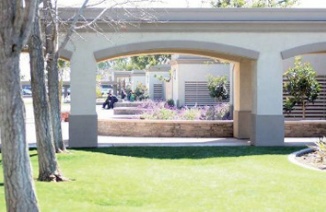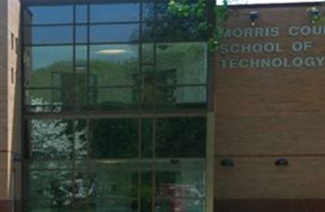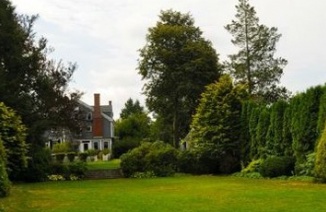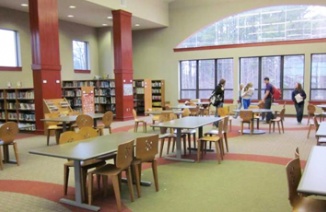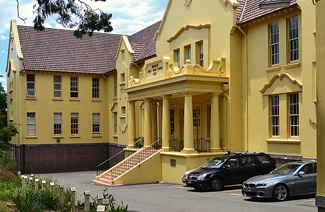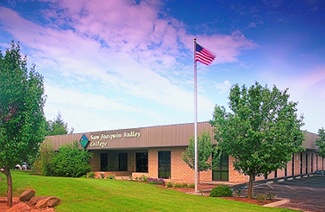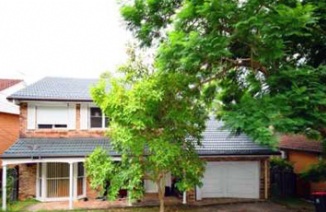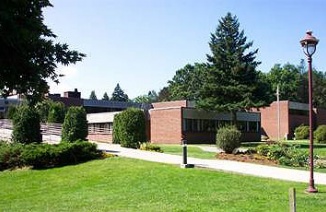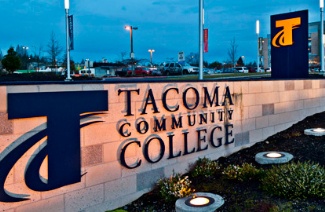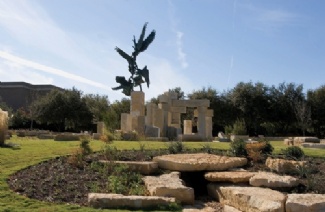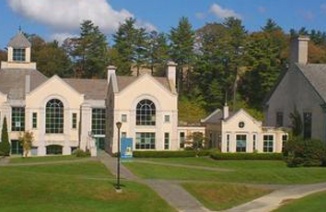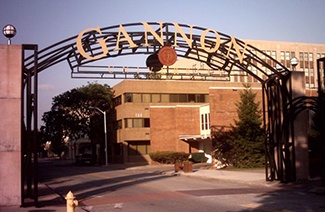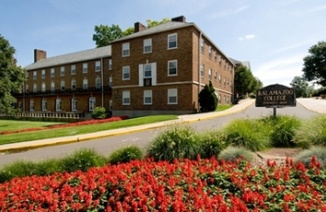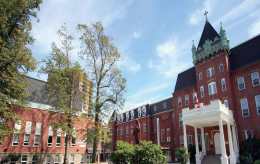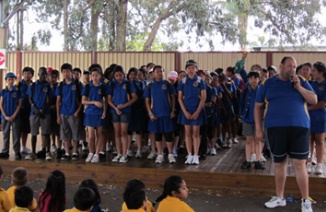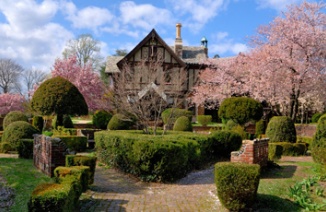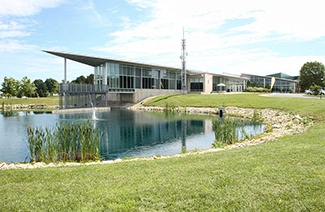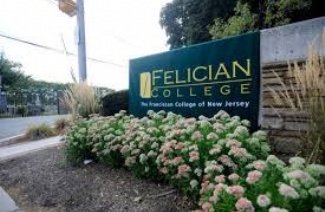今天小编为大家分享的是一篇关于
TPO5
Narrator: Listen to part of a lecture in an Astronomy Class
Professor: Last week, we covered some arguments against going back to the Moon. But there are compelling reasons in favor of another Moon landing too, um… not the least of which is trying to pinpoint the moon’s age. We could do this in theory by studying an enormous impact crater, known as the South Pole-Aitken Basin. Um…it’s located in the moon’s South Polar Region. But, since it’s on the far side of the moon, it can only be seen from space.
Here is an image of…we’ll call it the SPA Basin. This color-coated image of the SPA Basin, those aren’t its actual colors obviously, this image is from the mid-90s, from the American spacecraft called Clementine. Um… unlike earlier lunar missions, Clementine didn’t orbit only around the moon’s equator.
Its orbits enabled it to send back data to create this topographical map of … well, the grey and white area towards the bottom is the South Pole, the purples and blues in the middle correspond to low elevations - the SPA Basin itself, the oranges and reds around it are higher elevations.
The basin measures an amazing 2,500 km in diameter, and its average depth is 12 km. That makes it the biggest known crater in our solar system and it may well be the oldest. You know planetary researchers love studying deep craters to learn about the impacts that created them, how they redistributed pieces of the planet’s crust.
And in this case, we especially want to know if any of the mantle, the layer beneath the crust, was exposed by the impact. Not everyone agrees, but some experts are convinced that whatever created the SPA Basin did penetrate the Moon’s mantle. And we need to find out, because much more than the crust, the mantle contains information about a planet’s or Moon’s total composition. And that’s key to understanding planet formation. Um…Dian?
Dian: So, the only way to know the basin’s age is to study its rocks directly?
Professor: Well, from radio survey data, we know that the basin contains lots of smaller craters. So it must be really old, about 4 billion years, give or take a few hundred million years. But that’s not very precise. If we had rock samples to study, we’d know whether these small craters were formed by impacts during the final stages of planetary formation, or if they resulted from later meteorshowers.
Dian : But if we know around how old the Basin is, I’m not sure that’s reason enough to go to the Moon again.
Professor: No…, but such crude estimates…um…we can do better than that. Besides, there’s other things worth investigating, like is there water ice on the moon? Clementine’s data indicated that the wall of the south-polar crater was more reflective than expected. So some experts think there’s probably ice there. Also, data from a later mission indicates significant concentrations of hydrogenand by inference water, less than a meter underground at both poles.
Student: Well, if there’s water, how did it get there? Underground rivers?
Professor: We think meteors that crashed into the moon or tails of passing comets may have introduced water molecules. Any water molecules that found their way to the floors of craters near the moon’s poles, that water would be perpetually frozen, because the floors of those craters are always in shadow. Um…furthermore, if the water ice was mixed in with rock and dust, it would be protected from evaporation.
Dian: So are you saying there might be primitive life on the moon?
Professor: That’s not my point at all. Um… OK, say there is water ice on the moon. That would be of very practical value for a future moon base for astronauts. Water ice could be melted and purified for drinking. It could also be broken down into its component parts - oxygen and hydrogen. Oxygen could be used to breathe, and hydrogen could be turned into fuel, rocket fuel. So water ice could enable the creation of a self-sustaining moon base someday, a mining camp perhaps or a departure point for further space exploration.
Student: But hauling tons of equipment to the moon to make fuel and build a life support system for a moon base, wouldn’t that be too expensive?
Professor: Permanent base, maybe a ways off, but we shouldn’t have to wait for that. The dust at the bottom of the SPA Basin really does have a fascinating story to tell. I wouldn’t give for a few samples of it.
TPO5托福听力Lecture2题目文本
Question 1 of 6
What is the main purpose of the lecture?
A. To explain why scientists disagree about the age of the Moon.
B. To present arguments in favor of another Moon landing.
C. To explain how scientists discovered a crater on the far side of the Moon.
D. To review some finding of a recent mission to the Moon.
Question 2 of 6
What does the professor imply about the spacecraft Clementine?
A. It sent back the first color photographs of the Moon.
B. It was powered by solar energy.
C. It landed in the far side of the Moon.
D. It flew over the Moon’s polar regions.
Question 3 of 6
Why does the professor mention the Moon’s mantle?
A. To explain why scientists believe that meteor impacts cannot affect the Moon’s mantle.
B. To explain what kind of information scientists hope to obtain from the mantle.
C. To point out that the Moon’s crust and mantle are made of similar materials.
D. To point out that the Moon’s mantle and Earth’s mantle have different compositions.
Question 4 of 6
Why is the South Pole-Aitken Basin thought to be exceptionally old?
A. The walls of the Basin are more reflective than those of most other craters.
B. Testing of rocks from the Basin’s floor proves them to be as old as the Moon itself.
C. Many small craters have been detected at the bottom of the Basin.
D. A large amount of dust has been detected in and around the Basin.
Question 5 of 6
Why does the professor consider it important to find out if water ice exists on the Moon?Click on 2 answers.
A. Water ice could be processed to provide breathable air for astronauts.
B. One component of water ice could be used as a fuel for rockets.
C. Water ice could contain evidence of primitive life on the Moon.
D. Water ice could be tested to find out what type of meteors crashed into the Moon.
Question 6 of 6
What does the professor imply when he says this :
A. The current age estimates for the South Pole-Aitken Basin are based on incorrect assumptions.
B. The technology to analyze Moon rocks has not advanced much since the days of the Moon landings
C. Too few of the original Moon-rock samples were dated accurately
D. Only by testing samples from South Pole-Aitken Basin can its age be precisely determined
TPO5托福听力Lecture2答案解析
Question 1 of 6
正确答案:B
题目解析:从教授分析可以从crater来了解Moon’s age 以及后来提到了spacecraft’s的moon landing可以得出今天的重点就是To present arguments in favor of another Moon landing。也就是B选项。
Question2 of 6
正确答案:D
题目解析:从professor的分析可以看出spacecraft Clementine拍摄到了South Pole,的照片也就是说飞船飞过了polar regions也就是D选项。从之前的描述中看出它land的地方并不是moon的far side因此C错误。
Question 3 of 6
正确答案:B
题目解析:可以看出professor提到mantle就是为了mantle所能为研究者所提供的信息也就是To explain what kind of information scientists hope to obtain from the mantle。没有将Moon上和earth山的mantle进行任何比较,D错误。Mantle本身是the layer beneath the crust因此不存在To point out that the Moon’s crust and mantle are made of similar materials的说法,C错误。
Question 4 of 6
正确答案:C
题目解析:教授提到因为basin contains lots of smaller craters 所以it must be really old。可得出推断出old的证据就是那些craters。A选项中是其后提到的Clementine?s data indicated that the wall of the south-polar crater was more reflective than expected. So some experts think there?s probably ice there.是推断ice的存在的。与old无关。
Question 5 of 6
正确答案:AB
题目解析:Oxygen could be used to breathe也就是A. Water ice could be processed to provide breathable air for astronauts。and hydrogen could be turned into fuel, rocket fuel也就是B. One component of water ice could be used as a fuel for rockets。
Question 6 of 6
正确答案:D
题目解析:先是说craters无法提供准确的时间信息,而rock sample可以,而这些sample是源于South Pole-Aitken Basin 因此是D。A中并不是craters所提供的年代推测是错误的只是not very precise.因此A错误。
以上就是小编整理的精彩内容托福tpo52听力原文一文,希望可以帮助托福考生,更多精彩内容尽在,预祝托福考生取得理想成绩!
